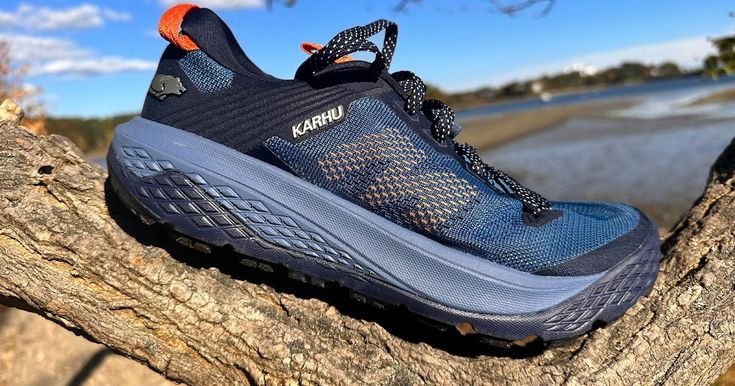Choosing the right pair of sports shoes is essential for anyone who wants to excel in athletic activities while maintaining comfort and preventing injuries. Whether you are a professional athlete, a fitness enthusiast, or someone who enjoys casual sports, the right footwear can make all the difference. With countless brands and styles available, finding the perfect pair can be overwhelming. In this article, we will guide you through the process of selecting the best sports shoes based on your needs, the type of activity, and key factors to consider.
Why Choosing the Right Sports Shoes Matters
Wearing the wrong shoes during sports activities can lead to various issues, including discomfort, poor performance, and even injuries. Here are a few reasons why selecting the right pair is crucial:
Injury Prevention: Proper sports shoes provide adequate support, cushioning, and stability, reducing the risk of injuries like sprains, blisters, or stress fractures.
Enhanced Performance: Well-designed shoes optimize your movements, allowing you to perform better by improving grip, flexibility, and balance.
Comfort: A comfortable pair of shoes ensures you can focus on your activity without distractions caused by pain or discomfort.
Durability: High-quality sports shoes last longer, saving you money in the long run.
Key Factors to Consider When Choosing Sports Shoes
- Type of Sport or Activity
Different sports demand specific types of footwear. Here’s a breakdown of popular sports and the shoes best suited for them:
Running: Running shoes should offer excellent cushioning to absorb impact, support for forward motion, and lightweight materials for speed.
Basketball: Basketball shoes require ankle support, cushioning for jumps, and traction for quick lateral movements.
Soccer: Soccer cleats provide grip on the field, are lightweight, and often include studs for better control on grass.
Tennis: Tennis shoes should have sturdy soles for lateral movement and good traction on court surfaces.
Gym/Training: Cross-training shoes are versatile, offering stability and cushioning for various activities like weightlifting or aerobics.
- Foot Type and Arch Support
Understanding your foot type is vital for choosing the right pair. There are three main foot types:
Flat Feet: People with flat feet need shoes with motion control and extra arch support.
Neutral Arches: Neutral arches benefit from shoes with balanced cushioning and support.
High Arches: High arches require shoes with extra cushioning to absorb shock.
To determine your foot type, try the “wet test” by stepping on a piece of paper with wet feet and observing the imprint.
- Fit and Size
A properly fitting shoe is non-negotiable. Consider the following tips:
Ensure there’s about a thumb’s width of space between your longest toe and the shoe’s tip.
Try shoes on in the afternoon or evening when your feet are slightly swollen.
Wear the same type of socks you plan to use during your activity.
Walk or jog around the store to test the fit and comfort.
- Cushioning and Support
The amount of cushioning and support needed depends on the activity and your personal preferences. Cushioning helps absorb shock, while support stabilizes your foot. For high-impact sports like running, prioritize shoes with advanced cushioning systems.
- Material and Breathability
Choose shoes made from breathable materials like mesh to keep your feet cool and dry. Avoid shoes with poor ventilation, as they can cause sweating and blisters.
- Traction and Outsole
The outsole should provide adequate grip for the type of surface you’ll be using. For example, trail running shoes have rugged soles for uneven terrain, while indoor sports shoes have non-marking soles for smooth surfaces.
Steps to Find the Perfect Pair of Sports Shoes
Step 1: Identify Your Needs
Ask yourself the following questions:
What sport or activity will I use these shoes for?
How often will I use them?
Do I have any specific foot conditions or requirements?
Step 2: Research Brands and Models
Look for reputable brands that specialize in sports footwear. Popular options include Nike, Adidas, ASICS, New Balance, Puma, and Brooks. Read reviews and compare features to narrow down your options.
Step 3: Try Them On
Visit a store to try on multiple pairs. Walk, jog, or perform specific movements related to your sport to ensure they feel right. If buying online, check the return policy in case the fit isn’t perfect.
Step 4: Break Them In
Once you’ve purchased your shoes, wear them for short periods to break them in before using them for intense activities. This helps prevent blisters and discomfort.
Common Mistakes to Avoid
Choosing Style Over Function: While trendy designs are tempting, prioritize functionality over appearance.
Not Replacing Worn-Out Shoes: Using old, worn-out shoes can lead to injuries. Replace your sports shoes every 300-500 miles or when you notice significant wear and tear.
Ignoring Your Foot Type: Wearing the wrong shoes for your foot type can cause discomfort and long-term issues.
Skipping Professional Advice: If you have specific needs, consult a podiatrist or a specialist for recommendations.
Conclusion
Choosing the best shoes for sports involves more than just picking a pair that looks good. By understanding your specific needs, considering factors like fit, cushioning, and the type of activity, you can find footwear that enhances your performance, keeps you comfortable, and reduces the risk of injuries. Take your time to research, try on multiple options, and invest in high-quality shoes that suit your lifestyle. Remember, the right pair of sports shoes is an investment in your health and athletic success.
